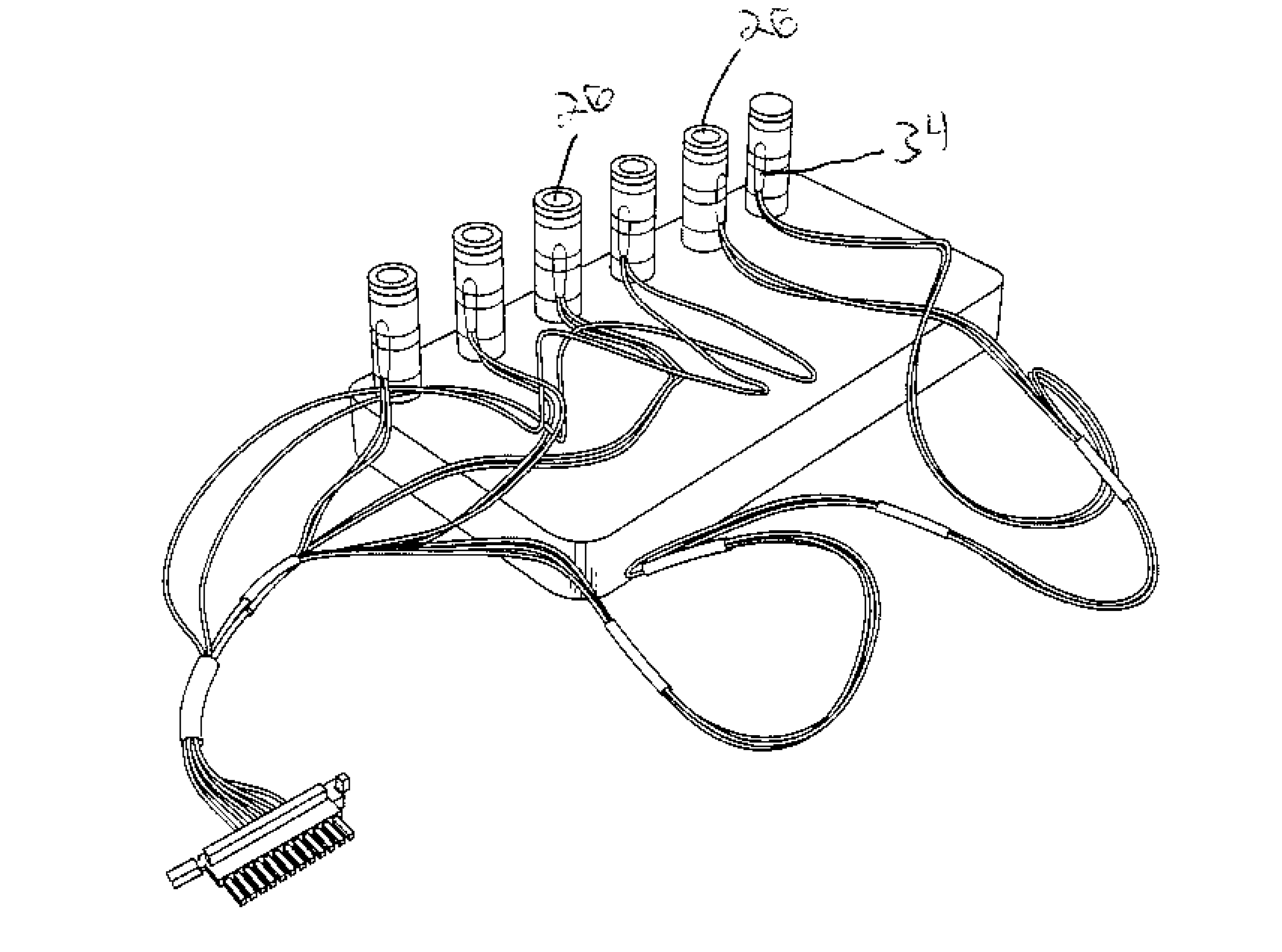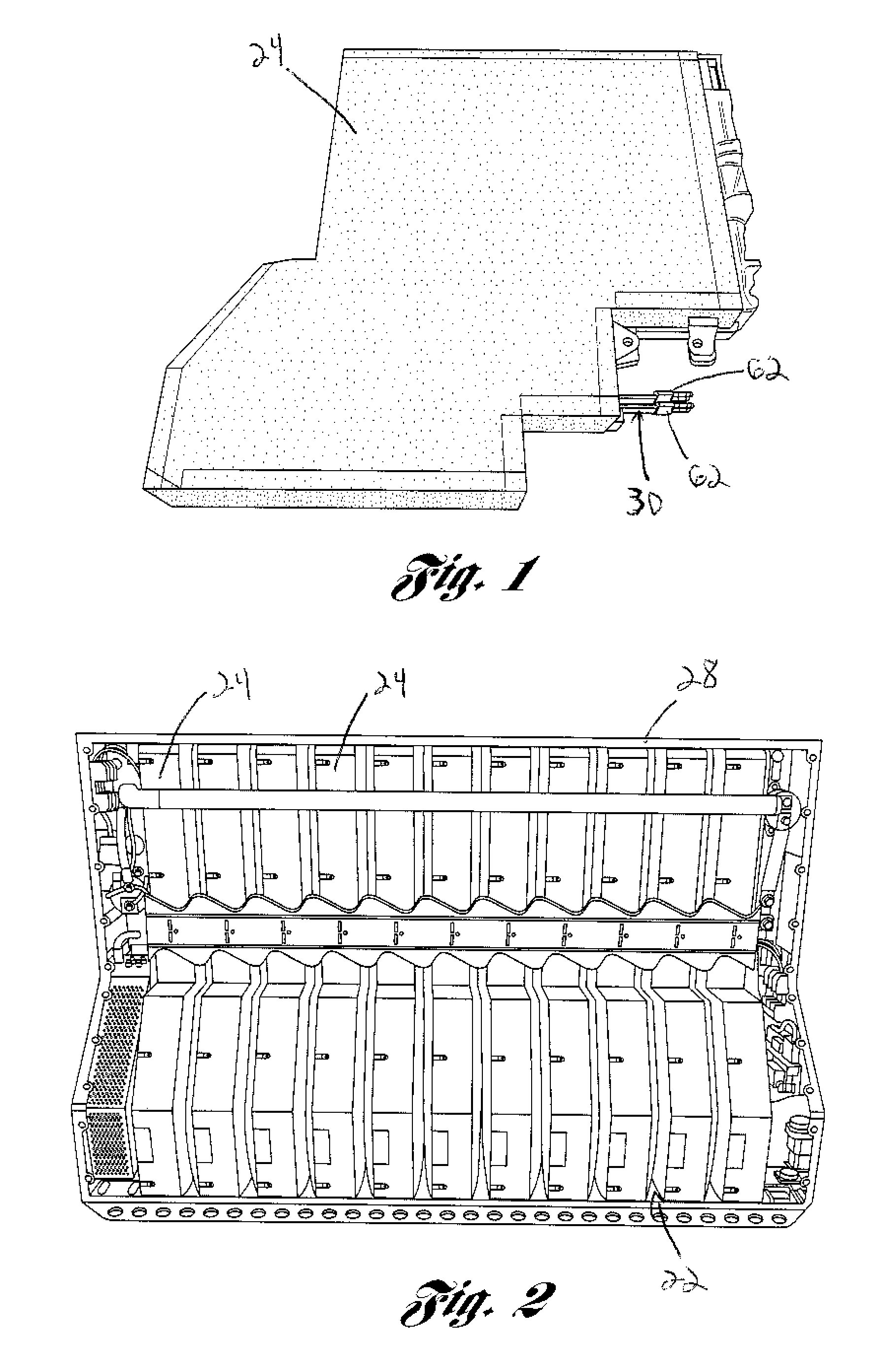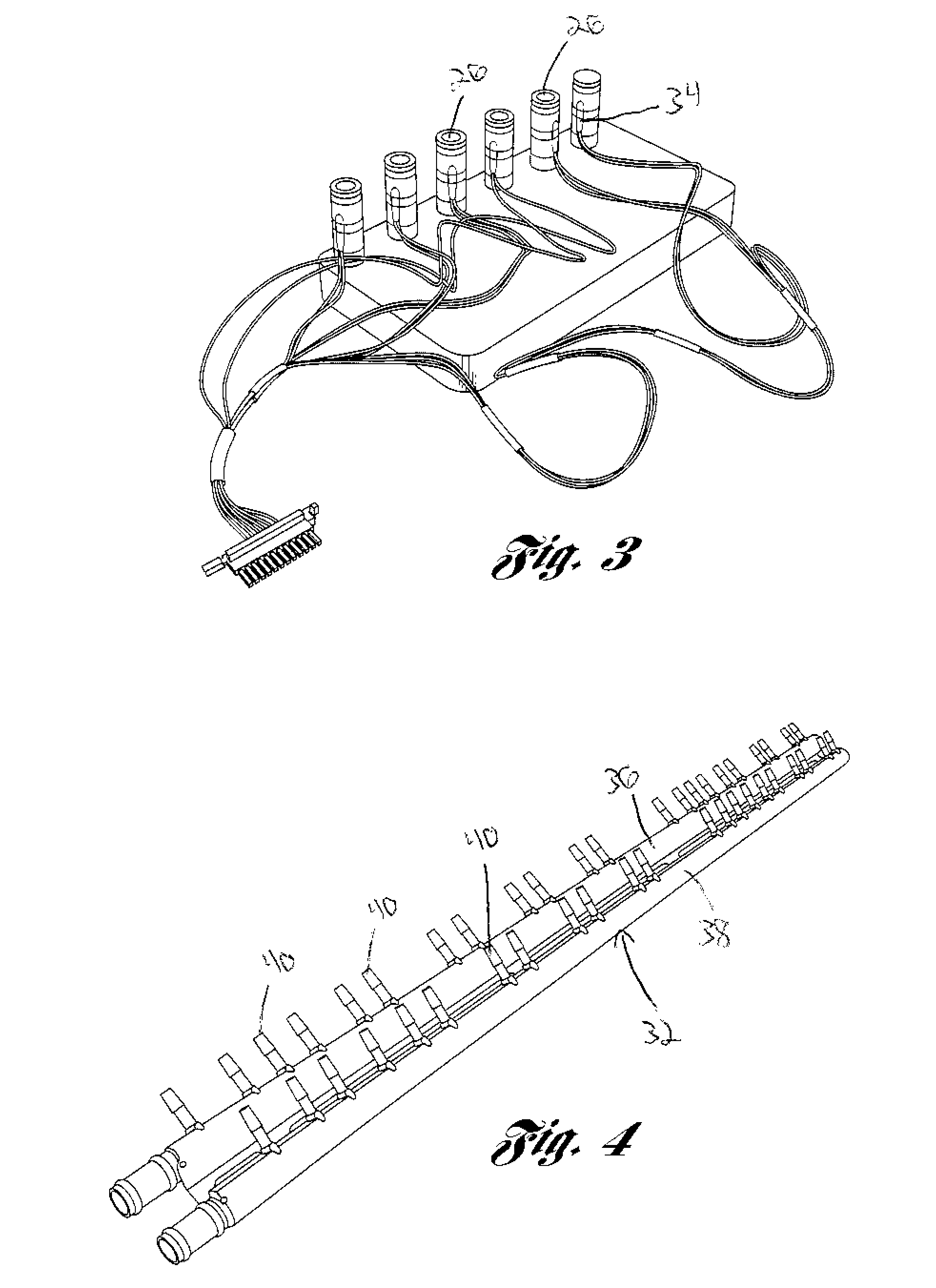Battery pack thermal management system
a battery pack and thermal management technology, applied in the direction of battery/fuel cell control arrangement, lighting and heating apparatus, cell components, etc., can solve the problems of reducing the range of electric cars, the durability and overall life of batteries or cells, and the inability of electric cars to achieve the acceleration, handling, performance, etc., to increase the thermal mass of batteries and reduce the cost of battery or cell maintenance and replacement, the effect of increasing the range and performance of electric vehicles
- Summary
- Abstract
- Description
- Claims
- Application Information
AI Technical Summary
Benefits of technology
Problems solved by technology
Method used
Image
Examples
Embodiment Construction
)
[0035]Referring to the drawings, a battery pack thermal management system 20 for use with an energy storage system (ESS) 22 is shown. The energy storage system or battery pack 22 is generally comprised of a predetermined number of battery modules or sheets 24, a main control and logic PSB, and a 12 volt power supply. In one contemplated embodiment the energy storage system 22 will have eleven battery modules or sheets 24, which are capable of producing approximately 375 volts DC. This nominal voltage will operate an electric vehicle that will be capable of traveling many miles without recharging and is capable of delivering enough power and acceleration to compare favorably with or outperform internal combustion engines. In one contemplated embodiment the ESS 22, will be capable of storing enough energy that the electric vehicle can travel approximately 200 miles without recharging. However, it should be noted that it is also contemplated to have an electric vehicle based on the pr...
PUM
| Property | Measurement | Unit |
|---|---|---|
| voltage | aaaaa | aaaaa |
| voltage | aaaaa | aaaaa |
| temperature | aaaaa | aaaaa |
Abstract
Description
Claims
Application Information
 Login to View More
Login to View More - R&D
- Intellectual Property
- Life Sciences
- Materials
- Tech Scout
- Unparalleled Data Quality
- Higher Quality Content
- 60% Fewer Hallucinations
Browse by: Latest US Patents, China's latest patents, Technical Efficacy Thesaurus, Application Domain, Technology Topic, Popular Technical Reports.
© 2025 PatSnap. All rights reserved.Legal|Privacy policy|Modern Slavery Act Transparency Statement|Sitemap|About US| Contact US: help@patsnap.com



